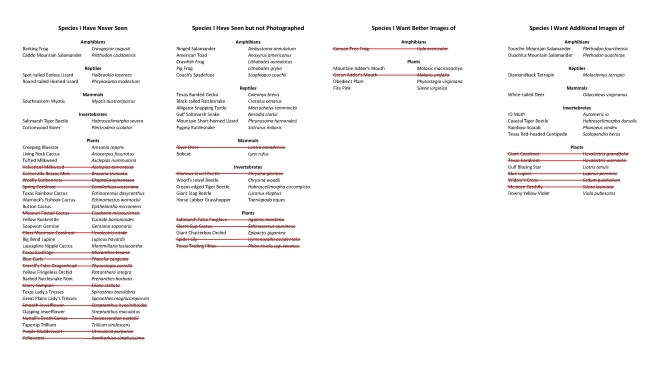
Cow Killer
July has been my most productive month yet. Due in large part to a trip to the Davis Mountains I was able to check 7 species off my list:
Spider Lily (Hymenocallis occidentalis)
Texas Coralroot (Hexalectris warnockii)
Glass Mountain Coralroot (Hexalectris nitida)
Giant Coralroot (Hexalectris grandiflora)
Mexican Catchfly (Silene laciniata)
Glorious Scarab (Chrysina gloriosa)
Canyon Tree Frog (Hyla arenicolor)
One of the most interesting photographic experiences of July came toward the end of the month, when a female Red Velvet Ant a.k.a. Cow Killer (Dasymutilla occidentalis) came wandering through our yard. These large wasps have always fascinated me, and I’ve long wanted to get a good photo of one. I’ve tried a few times in the past but found them nearly impossible to photograph. They are surprisingly fast and never stop moving. The females are flightless, while the males are winged.
Despite their ominous name, which eludes to their supposedly highly painful sting, my wife offered to help. I captured it in a cup and then led it onto a 3-foot long stick. My wife held the stick, switching hands as it paced rapidly from one end to the other. Occasionally it would stop at the edge for the briefest of moments. I ended up taking over 100 shots. I got some that were very sharp, but she was in an awkward position, and others where she was in the perfect position, but the focus wasn’t right. This one ended up being my favorite. When we finished I let her continue on its way.
Cow killers are parasites of parasites, and when we encountered her I assume she was on the hunt for a suitable host for her offspring. They seek out the larvae of Cicada Killer wasps (Sphecius speciosus), and lay their own eggs into the larvae of the Cicada Killers, which have been laid on a live, paralyzed cicada. They will also parasitize a number of other ground nesting wasps and bumblebees.
In early July I went to visit a population of Crested Coralroot (Hexalectris spicata) in the Davy Crockett National Forest. Despite significant damage from feral hogs to the dense leaf litter at the site, I found several blooming plants. Though most were past their prime, i found a few fresh, interesting blooms. It’s hard to imagine a flower having a personality, but the flowers of Hexalectris spicata certainly look like they could.
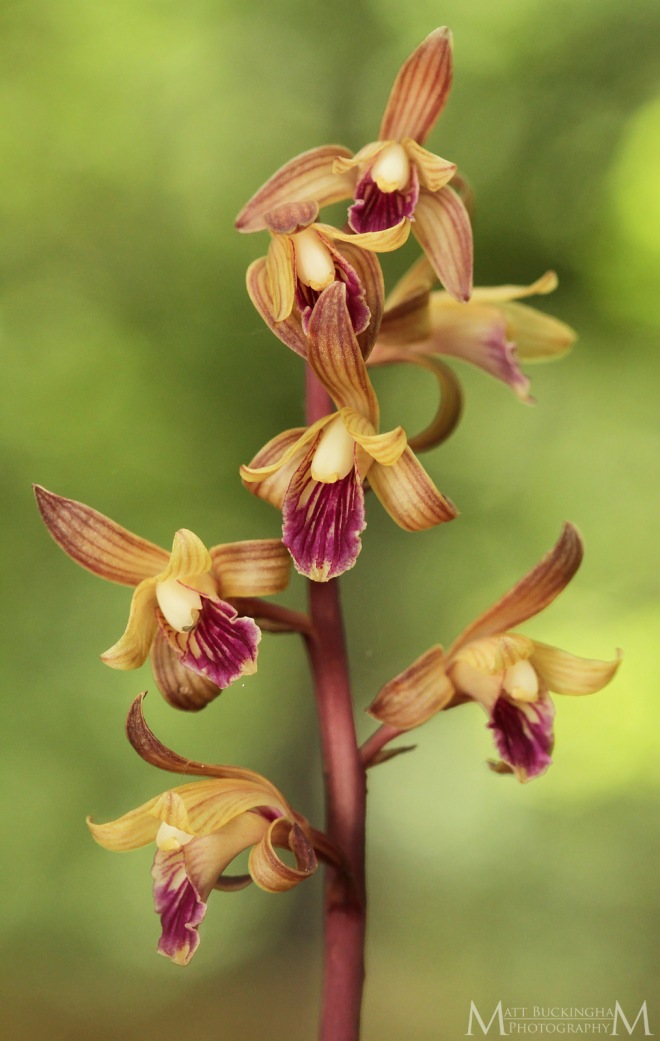
Crested Coralroot
En route to the Crested Coralroot spot I stopped along a forest road to relieve myself. As I was doing so I spotted several Little Ladies’ Tresses (Spiranthes tuberosa) blooming alongside the road. These diminutive orchids bloom in the summer in open woodlands.
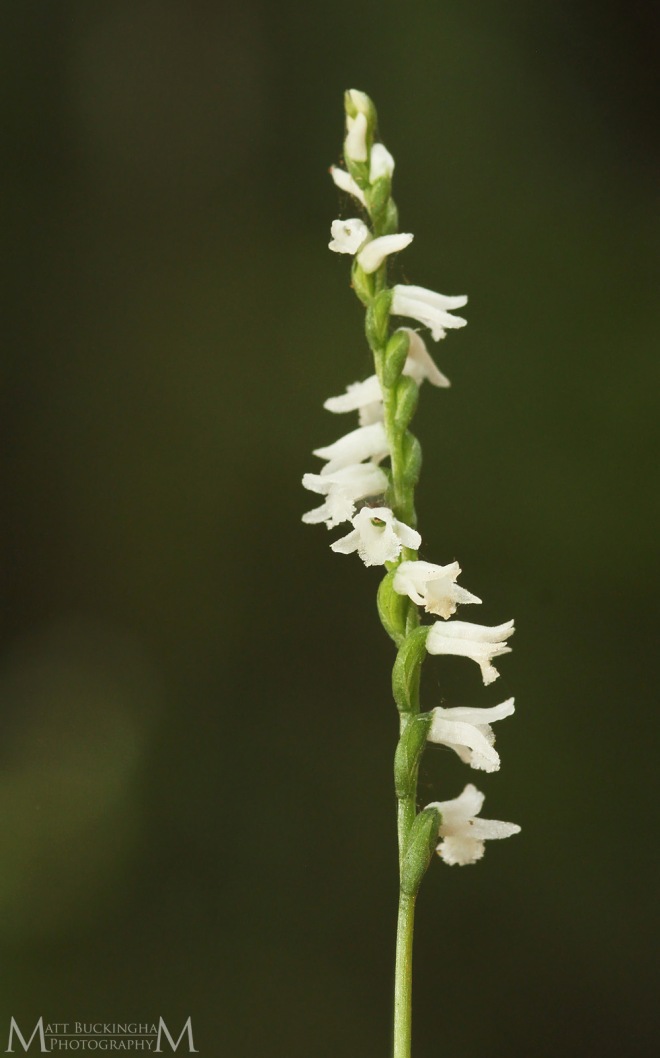
Little Ladies’ Tresses
I photographed this Bog Coneflower (Rudbeckia scabrifolia) in a herbaceous seep on private land.
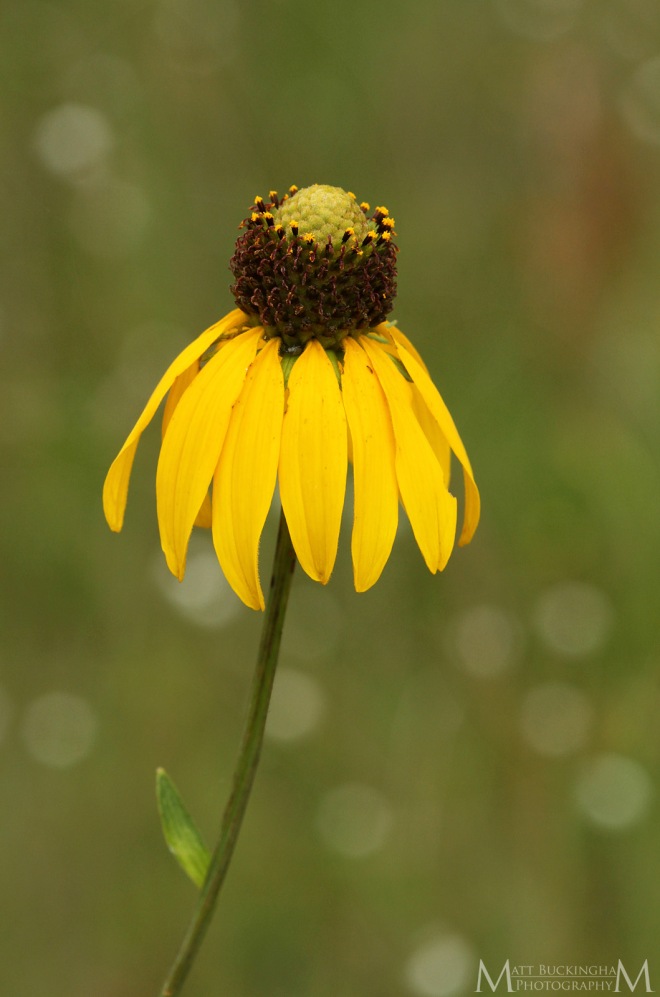
Bog Coneflower
I have been wanting to photograph Climbing Milkweed (Matelea decipiens) for a while. I found a plant with a single cluster of blooms along a springfed stream.
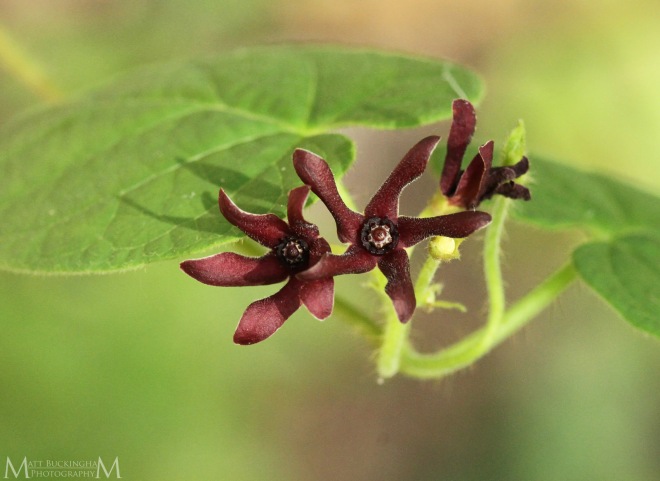
Climbing Milkweed
The striking Blue Waterleaf (Hydrolea ovata) is common in herbaceous wetlands in the eastern third of the state.
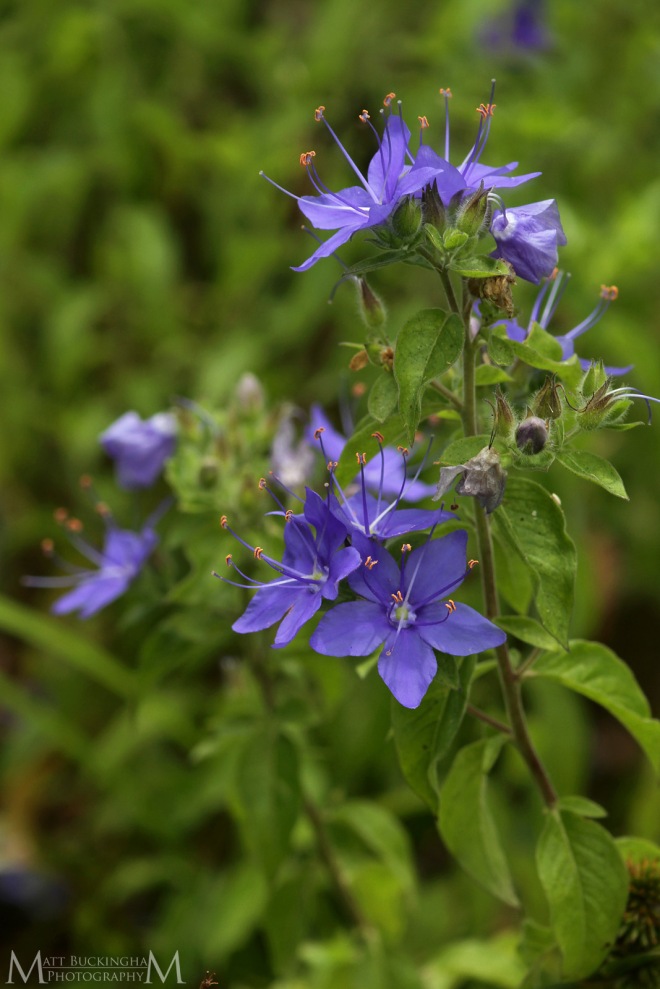
Blue Waterleaf
Hydrolea ovata can often be found growing with Looseflower Water-Willow (Justicia lanceolata).

Looseflower Water-Willow
Toward the end of the month I visited a high quality longleaf pine savannah on private land with my friend James. During our visit we were fortunate to catch the rare Scarlet Catchfly (Silene subciliata) in bloom.
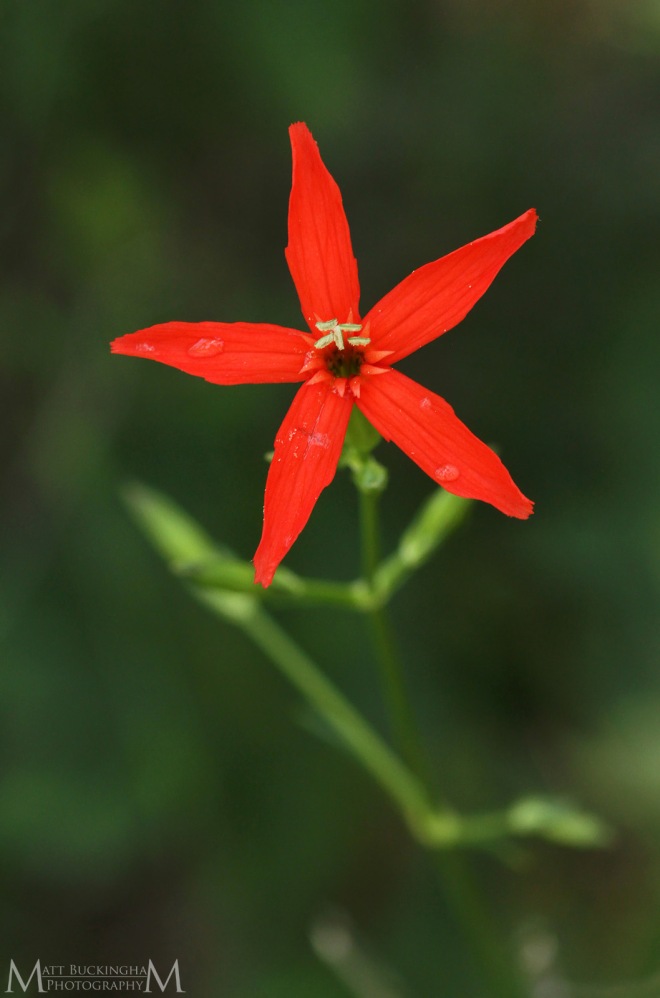
Scarlet Catchfly
I’ll end my July recap with a photo of a Slimleaf Milkweed (Asclepias stenophylla) that we saw on our way back from Dallas, where we photographed Hexalectris warnockii and H. nitida in early July. This is one of the rarer milkweeds of Texas. It is primarily a species of the Great Plains, occurring on dry, sandy prairies that have not experienced significant soil disturbance. In Texas it occurs in scattered populations from the Rolling Plains to the Blackland Prairies, where it appears to be rare and declining.
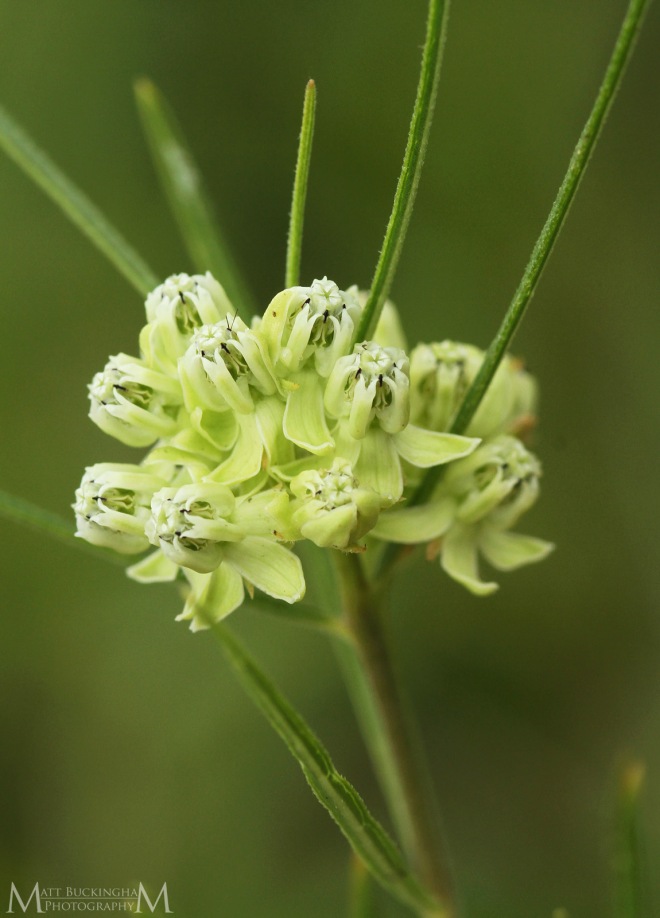
Slimleaf Milkweed

